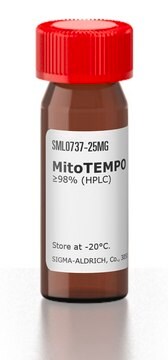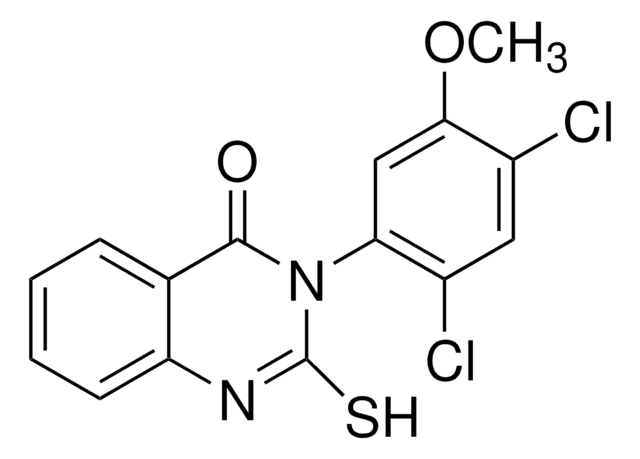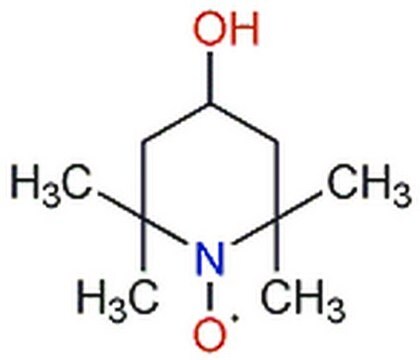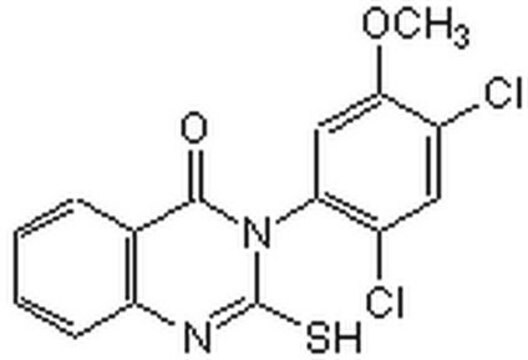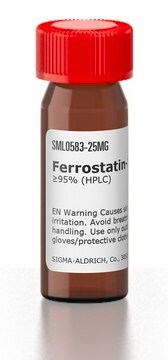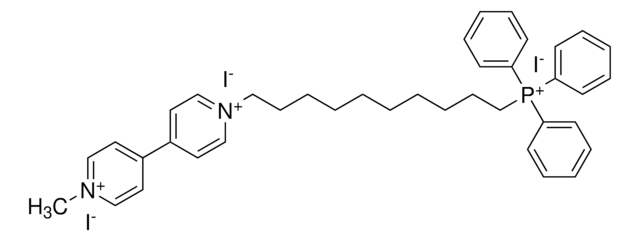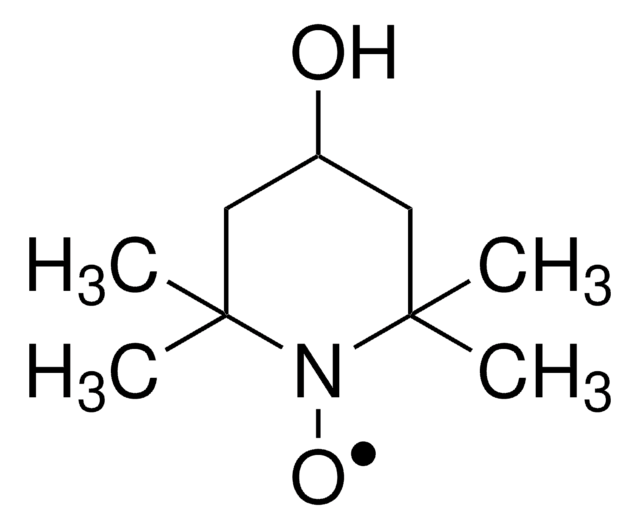SML0629
Mitochondrial Fusion Promoter M1
≥95% (HPLC)
Synonym(s):
(E)-4-Chloro-2-(1-(2-(2,4,6-trichlorophenyl)hydrazono)ethyl)phenol, 1-(5-Chloro-2-hydroxyphenyl)-ethanone 2-(2,4,6-trichlorophenyl)hydrazone
About This Item
Recommended Products
Quality Level
Assay
≥95% (HPLC)
form
powder
color
white to beige
solubility
DMSO: 10 mg/mL, clear
storage temp.
2-8°C
SMILES string
Clc1c(c(cc(c1)Cl)Cl)NNC(=C)c2c(ccc(c2)Cl)O
InChI key
WMAGOVJOXMBLHY-UHFFFAOYSA-N
Application
- to study its effects on peroxisome proliferator-activated receptor-γ coactivator (PGC)-1α expression in breast cancer cells
- to study the link between nucleoside diphosphate kinase 3 (NME3)-regulated mitochondrial fluctuations and stability of genome in NME3 knockdown cells
- to study its effects on mitochondrial fusion in neuronal cells
Biochem/physiol Actions
Storage Class Code
11 - Combustible Solids
WGK
WGK 3
Flash Point(F)
Not applicable
Flash Point(C)
Not applicable
Choose from one of the most recent versions:
Certificates of Analysis (COA)
Don't see the Right Version?
If you require a particular version, you can look up a specific certificate by the Lot or Batch number.
Already Own This Product?
Find documentation for the products that you have recently purchased in the Document Library.
Customers Also Viewed
Our team of scientists has experience in all areas of research including Life Science, Material Science, Chemical Synthesis, Chromatography, Analytical and many others.
Contact Technical Service